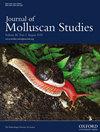Population genomics of the endangered freshwater mussel, Arcidens wheeleri (Unionoidea: Unionidae: Anodontini), in the Little River, Arkansas, USA
IF 1.2
4区 生物学
Q2 MARINE & FRESHWATER BIOLOGY
引用次数: 0
Abstract
North America is a hotspot of freshwater mussel diversity. However, over the last century, many anthropogenic stressors have led to substantial declines in freshwater mussels of the families Unionidae and Margaritiferidae in North America. Conserving the remaining mussel fauna is a priority, as they play an integral role in freshwater ecosystems. The Little River in Arkansas is home to one of the last remaining populations of the federally endangered freshwater mussel, Arcidens wheeleri (Unionidae: Anodontini). Population dynamics information is lacking for A. wheeleri, and no population genetics study has been conducted on this species. A greater understanding of the genetic diversity within a population can serve as a benchmark for developing an effective management plan. We sampled A. wheeleri from three locations in the Little River. Genomic data were generated with a single-enzyme restriction-site-associated DNA sequencing approach to assess genetic diversity and structure of A. wheeleri in the Little River. Genetic structure analyses indicated one genetic population among the three locations, with limited, fine-scale subpopulation structure. Observed heterozygosity values were considerably lower than expected heterozygosity values, with Ho = 0.14 and He = 0.22, likely indicating a genetic bottleneck. Demographic analysis of the Little River population of A. wheeleri also suggests a historical bottleneck. Furthermore, a high inbreeding coefficient (FIS = 0.33) indicates A. wheeleri in the Little River is losing genetic diversity. Data generated indicate considerable risk of extirpation for A. wheeleri from the Little River and should serve as a baseline for future monitoring. Given its high risk of extinction, we recommend increased study of A. wheeleri across its range and on-the-ground conservation actions that include habitat protection and restoration, which are the only options until a successful host fish and protocols are identified for propagation.美国阿肯色州小河中的濒危淡水贻贝 Arcidens wheeleri(联盟目:联盟科:Anodontini)的种群基因组学研究
北美洲是淡水贻贝多样性的热点地区。然而,在过去的一个世纪里,许多人为压力因素导致北美淡水贻贝科(Unionidae)和淡水贻贝属(Margaritiferidae)的数量大幅减少。由于淡水贻贝在淡水生态系统中发挥着不可或缺的作用,因此保护剩余的贻贝动物群是当务之急。阿肯色州的小河是联邦濒危淡水贻贝 Arcidens wheeleri(联盟科:Anodontini)仅存种群之一的家园。轮子贻贝缺乏种群动态信息,也没有进行过种群遗传学研究。进一步了解种群内的遗传多样性可作为制定有效管理计划的基准。我们在小河的三个地点采集了车轮鱼样本。我们采用单酶限制性位点相关 DNA 测序方法生成了基因组数据,以评估小河中轮虫的遗传多样性和结构。遗传结构分析表明,三个地点有一个遗传种群,其亚种群结构有限且规模较小。观察到的杂合度值大大低于预期的杂合度值,Ho = 0.14,He = 0.22,这可能表明存在遗传瓶颈。对小河A. wheeleri种群的人口分析也表明存在历史瓶颈。此外,较高的近亲繁殖系数(FIS = 0.33)表明小河中的 A. wheeleri 正在丧失遗传多样性。所生成的数据表明,小河中的 A. wheeleri 有相当大的灭绝风险,应作为未来监测的基线。鉴于其灭绝的高风险,我们建议在其分布范围内加强对轮虫的研究,并采取包括栖息地保护和恢复在内的实地保护行动,这是在找到成功的宿主鱼类和繁殖协议之前的唯一选择。
本文章由计算机程序翻译,如有差异,请以英文原文为准。
求助全文
约1分钟内获得全文
求助全文
来源期刊

Journal of Molluscan Studies
生物-动物学
CiteScore
3.00
自引率
8.30%
发文量
36
审稿时长
3 months
期刊介绍:
The Journal of Molluscan Studies accepts papers on all aspects of the study of molluscs. These include systematics, molecular genetics, palaeontology, ecology, evolution, and physiology. Where the topic is in a specialized field (e.g. parasitology, neurobiology, biochemistry, molecular biology), submissions will still be accepted as long as the mollusc is the principal focus of the study, and not incidental or simply a convenient experimental animal. Papers with a focus on fisheries biology, aquaculture, and control of molluscan pests will be accepted only if they include significant advances in molluscan biology. While systematic papers are encouraged, descriptions of single new taxa will only be considered if they include some ‘added value’, for example in the form of new information on anatomy or distribution, or if they are presented in the context of a systematic revision or phylogenetic analysis of the group.
 求助内容:
求助内容: 应助结果提醒方式:
应助结果提醒方式:


